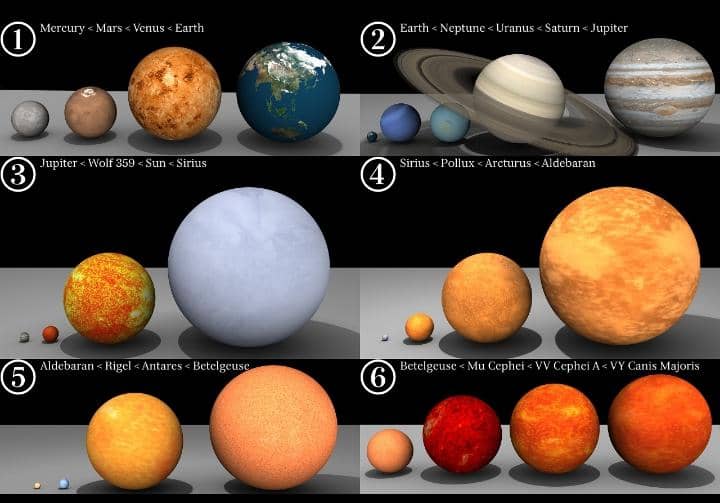How many people still find it hard to believe that stars are vastly larger than our planet, even with scientific evidence? This common misconception often arises from the vast distances involved and our limited perspective.
Stars, which are massive celestial bodies primarily composed of hydrogen and helium, can vary dramatically in size. While some stars are comparable to Earth, most are significantly larger, with sizes ranging from just a fraction of the Sun’s diameter to over 2,000 times larger.
The Sun, our closest star, serves as a useful reference point. With a diameter of approximately 1.4 million kilometers (about 864,000 miles), it is about 109 times wider than Earth.
However, many stars dwarf the Sun; for instance, Betelgeuse and Antares are red supergiants that can reach sizes between 300 and 600 solar radii. This means they could encompass our entire solar system within their vast expanses. Such immense sizes highlight the incredible diversity among stars in the universe.
Stars are categorized based on their size and brightness. Most stars fall into three main categories: dwarf stars, giants, and supergiants. Dwarf stars, like our Sun, are relatively small compared to giants and supergiants.
Giants can be up to 12 times larger than the Sun, while supergiants can exceed 1,500 times its size. This classification illustrates not only the differences in size but also the life cycles of these celestial bodies as they evolve over millions of years.
In terms of mass, stars also exhibit significant variation. The mass of a star can range from less than one-tenth that of the Sun to more than 150 solar masses. Interestingly, smaller stars are more common in the universe; red dwarfs make up about 70% of all stars.
In contrast, massive stars burn through their fuel quickly and have shorter lifespans, often ending their lives in spectacular supernova explosions.
Understanding the sizes of stars compared to Earth reveals the vastness of our universe and the incredible processes that govern stellar formation and evolution.
As we continue to explore space through advanced telescopes and missions, our knowledge about these magnificent celestial bodies expands, reinforcing the fact that most stars far exceed Earth in size and scale.

